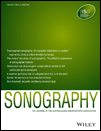
Sonography
Scope & Guideline
Illuminating the Future of Diagnostic Imaging
Introduction
Aims and Scopes
- Clinical Applications of Sonography:
The journal emphasizes the use of sonography in clinical settings, showcasing its role in diagnosing and managing various medical conditions, including vascular, cardiac, and obstetric issues. - Innovative Techniques and Technologies:
Research on new sonographic techniques, including elastography, 3D imaging, and artificial intelligence integration, is a significant focus, highlighting advancements that improve diagnostic accuracy. - Interdisciplinary Research:
The journal encourages studies that bridge sonography with other medical fields, including radiology, cardiology, and emergency medicine, fostering a comprehensive understanding of patient care. - Education and Professional Development:
'Sonography' also addresses the educational aspects of sonography, exploring training methodologies, sonographer well-being, and the development of competencies necessary for effective practice. - Case Studies and Clinical Insights:
The publication frequently includes case reports that provide valuable insights into rare conditions and unique diagnostic challenges, contributing to the broader knowledge base of clinical sonography.
Trending and Emerging
- Artificial Intelligence in Sonography:
There is a notable increase in research exploring the integration of artificial intelligence and machine learning in sonographic practice, highlighting its potential to enhance diagnostic accuracy and efficiency. - Point-of-Care Ultrasound (POCUS):
The use of POCUS in various clinical settings, especially in emergency and critical care, is becoming a significant area of interest, reflecting the growing recognition of its importance in immediate patient assessment. - Focus on Pediatric Applications:
Emerging themes include an increased focus on pediatric sonography, with studies addressing unique challenges and techniques for imaging in children, indicating a growing recognition of this specialized area. - Patient-Centered Care and Communication:
Research is increasingly emphasizing the importance of patient experience and communication strategies in sonography, reflecting broader trends in healthcare towards patient-centered approaches. - Sonographer Well-Being and Professional Development:
There is a rising trend in exploring the well-being of sonographers and the importance of professional development, addressing issues such as burnout, emotional resilience, and job satisfaction.
Declining or Waning
- Basic Research in Sonography:
There seems to be a decreasing emphasis on purely basic or theoretical research in sonography. Instead, there is a stronger focus on clinical applications and practical innovations. - Conventional Imaging Techniques:
Traditional imaging techniques that do not incorporate advanced technologies (e.g., standard 2D ultrasound without enhancements) are being reported less frequently, as the field moves towards more sophisticated and integrated approaches. - Single-Center Studies:
The journal is witnessing fewer single-center studies, with a growing trend towards multicenter collaborations and larger cohort studies that enhance the generalizability of findings. - Historical Perspectives on Sonography:
Research focusing on historical perspectives or the evolution of sonographic techniques appears to be less prevalent, as the journal shifts towards contemporary issues and future directions in the field.
Similar Journals
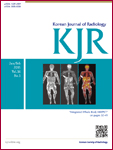
KOREAN JOURNAL OF RADIOLOGY
Pioneering Research in Radiology and Nuclear MedicineKorean Journal of Radiology (ISSN: 1229-6929, E-ISSN: 2005-8330), published by the Korean Society of Radiology, stands as a leading international platform for the dissemination of high-quality research and advancements in the fields of radiology, nuclear medicine, and imaging. With a remarkable impact factor and ranked in the Q1 quadrant in its category, this journal showcases cutting-edge studies, clinical investigations, and comprehensive reviews that significantly contribute to the understanding and practice of medical imaging. Researchers, clinicians, and students alike will find the journal an invaluable resource, featuring innovative methodologies, case studies, and essential updates in imaging technology. Since its inception in 2000 and continuing through 2024, the Korean Journal of Radiology remains dedicated to promoting excellence and fostering collaborative research within the global radiology community, underscoring the importance of imaging in modern medicine.

Indian Journal of Radiology and Imaging
Shaping the Future of Radiology Through Innovative PublicationsThe Indian Journal of Radiology and Imaging, published by THIEME MEDICAL PUBL INC, is a prominent open-access journal in the field of radiology, nuclear medicine, and imaging. Since its inception in 1984, the journal has provided a platform for researchers, professionals, and students to disseminate innovative research and findings in diagnostic imaging. With a growing impact factor and categorized in the Q3 quartile according to the 2023 rankings, it ranks among the notable journals in its field, although it currently stands at Rank #244 out of 333 within Scopus, reflecting its competitive position in radiology research. The journal, accessible to a global audience since 1999, aims to advance the knowledge and practice in imaging by inviting diverse contributions, including original research articles, reviews, and case reports. Its commitment to open-access publication fosters wider dissemination and collaborative discourse, crucial for the dynamic landscape of medical imaging.

AMERICAN JOURNAL OF ROENTGENOLOGY
Elevating Imaging Excellence.AMERICAN JOURNAL OF ROENTGENOLOGY (AJR), published by the American Roentgen Ray Society, stands as a beacon of excellence in the fields of Radiology, Nuclear Medicine, and Imaging. With an impressive impact factor positioning it in the Q1 category of both Medicine (Miscellaneous) and Radiology as of 2023, AJR is ranked 13th out of 333 journals in its category, reflecting its prominent presence and high relevance in advancing medical imaging knowledge and practice. Established in 1973 and continuing through to 2024, the journal encompasses a broad spectrum of research, critical reviews, and innovative techniques, making it a vital resource for researchers, healthcare professionals, and students alike. Although it does not currently offer open access options, AJR ensures that its rigorous, peer-reviewed content remains accessible to a global audience committed to the evolution of radiological science. With its home base in Leesburg, Virginia, AJR not only informs but also inspires advancements in radiology, enhancing diagnostic practices and patient care globally.

Abdominal Radiology
Transforming Understanding of Abdominal DiseasesAbdominal Radiology is an esteemed journal published by Springer, focusing on the intricate and evolving field of abdominal imaging. With its ISSN 2366-004X and E-ISSN 2366-0058, this journal serves as a vital platform for disseminating high-quality research and clinical findings that advance both the understanding and practice of radiology specifically related to abdominal diseases. With a commendable impact, categorized in 2023 as Q2 in the fields of Gastroenterology, Radiological and Ultrasound Technology, and Radiology, Nuclear Medicine and Imaging, and Q1 in Urology, it attracts an audience eager for cutting-edge insights. Furthermore, its ranking in Scopus reflects its strong influence, with a notable position of #21 in Urology and #92 in Radiology. The journal adopts an Open Access model, facilitating a wider dissemination of knowledge and promoting collaborative research efforts on a global scale. The convergence of contributions from established researchers and emerging professionals alike enriches its content from 2016 to 2024, ensuring that readers remain at the forefront of abdominal diagnostics and therapeutic advancements.
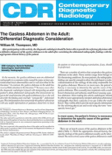
Contemporary Diagnostic Radiology
Innovative Insights in Diagnostic RadiologyContemporary Diagnostic Radiology is a pivotal journal in the field of medical imaging and radiology, published by Lippincott Williams & Wilkins. With an ISSN of 0149-9009 and an E-ISSN of 1938-1395, this journal serves as an essential platform for disseminating high-quality research and advances in diagnostic radiology and related disciplines. While it is categorized in the lower quartiles (Q4) for its performance in the 2023 rankings in both Neurology, Radiology, Nuclear Medicine and Imaging, and Surgery, its focus on emerging technologies and methodologies in imaging continues to provide valuable insights for practitioners and researchers alike. The journal’s scope includes innovative diagnostic tools, imaging techniques, and case studies, fostering collaboration and knowledge sharing in the medical community. Although it does not offer open access options, its commitment to contributing to the ongoing dialogue in clinical imaging is undisputed, making it an essential resource for professionals seeking to stay abreast of current trends and research in the rapidly evolving landscape of diagnostic radiology.
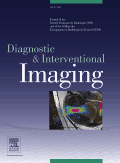
Diagnostic and Interventional Imaging
Pioneering Research for Enhanced Patient CareDiagnostic and Interventional Imaging, published by Elsevier Masson, stands as a prominent journal in the fields of Radiology, Nuclear Medicine, and Imaging. With a significant impact factor and a reputation for high-quality research, this journal is dedicated to advancing the understanding and application of diagnostic and interventional imaging techniques. It has achieved an impressive Q1 ranking across multiple categories including Medicine (miscellaneous) and Radiological and Ultrasound Technology, demonstrating its esteemed position within the academic community. The journal features cutting-edge studies and reviews, reflecting the latest innovations and practices from 2012 to 2024. Researchers, healthcare professionals, and students alike can look forward to accessing valuable insights that drive forward the discipline and improve patient outcomes, as evidenced by its robust Scopus rankings placing it among the top journals in its domain.
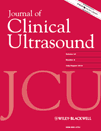
JOURNAL OF CLINICAL ULTRASOUND
Advancing the Art and Science of Clinical UltrasoundJOURNAL OF CLINICAL ULTRASOUND, published by Wiley, is a prestigious scholarly journal dedicated to advancing the field of clinical ultrasound. With ISSN 0091-2751 and E-ISSN 1097-0096, this journal has been a significant contributor to the scientific community since its inception in 1973, with coverage extending through to 2024. It is recognized in Scopus, ranked #214 out of 333 in the category of Radiology, Nuclear Medicine and Imaging, placing it in the 35th percentile, and holds a Q3 quartile position as of 2023. The journal aims to disseminate high-quality research, reviews, and clinical studies that explore innovative ultrasound techniques and their application in various medical diagnoses and treatments. Although it is not open access, it remains an invaluable resource for researchers, professionals, and students seeking to stay at the forefront of ultrasound technology and clinical practice. Located in Hoboken, New Jersey, the JOURNAL OF CLINICAL ULTRASOUND continues to uphold its commitment to excellence in the field, inviting contributions that foster knowledge and application of ultrasound as a vital diagnostic tool in medicine.
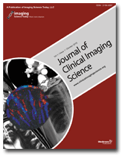
Journal of Clinical Imaging Science
Transforming Clinical Imaging Through Groundbreaking ResearchWelcome to the Journal of Clinical Imaging Science, a dedicated platform for disseminating pioneering research in the field of radiology, nuclear medicine, and imaging. Published by SCIENTIFIC SCHOLAR LLC, this peer-reviewed journal offers a prominent forum for researchers, professionals, and students to share insights and advancements that push the boundaries of clinical imaging practice and technology. With a proud history of publication since 2011 and converged years extending through 2024, the journal currently ranks in the top quartile (Q3) as per the 2023 categorization in the relevant field, positioning itself as a valuable resource among its peers. While embracing a non-open access model, it guarantees high-quality content that contributes to the 36th percentile of Scopus rankings for medicine and imaging sciences. The Journal of Clinical Imaging Science aspires to enhance the knowledge base in clinical settings and promote innovative methodologies, serving as an essential tool for advancing education and practice in imaging sciences.
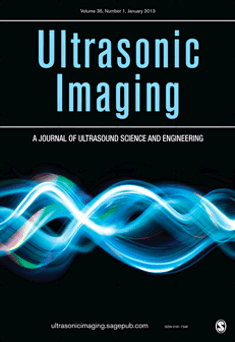
ULTRASONIC IMAGING
Shaping the Landscape of Medical Imaging with UltrasoundULTRASONIC IMAGING, published by SAGE PUBLICATIONS INC, is a leading journal within the fields of Radiology, Nuclear Medicine, and Imaging, with a particular focus on advancing the science and application of ultrasound technology. Since its inception in 1979, the journal has provided a platform for high-quality research, featuring innovative studies that bridge theoretical advancements and practical applications, making it an essential resource for researchers and professionals. With a notable impact factor reflecting its robust contribution to the medical community (2023: Q2 rankings in both Radiological and Ultrasound Technology and Radiology, Nuclear Medicine, and Imaging), ULTRASONIC IMAGING serves to disseminate pivotal developments in diagnostic imaging techniques, enhancing the understanding of ultrasound's role in patient care. Researchers are encouraged to explore this journal's collection of cutting-edge articles that push the boundaries of knowledge in ultrasound imaging and its implementation in clinical practices.
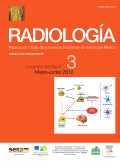
RADIOLOGIA
Advancing the frontiers of imaging and nuclear medicine.RADIOLOGIA is a distinguished journal in the field of Radiology, Nuclear Medicine, and Imaging, published by Elsevier España. With a rich history since its inception in 1961, this journal serves as a vital resource for professionals, researchers, and students interested in the latest developments and innovations in radiological practices. Although it is currently categorized in the Q3 quartile, its contributions continue to shape and advance clinical practices and research in radiology. RADIOLOGIA provides a platform for scholarly articles, reviews, and case studies that underpin the complexities of imaging techniques and nuclear medicine, while also addressing emerging trends and technologies. The journal is indexed with the ISSN 0033-8338 and E-ISSN 1578-178X, reflecting its accessibility to a global audience dedicated to enhancing patient care through advanced imaging methodologies. Readers can find the journal published in Spain and benefit from its commitment to disseminating pertinent research across diverse aspects of radiology.